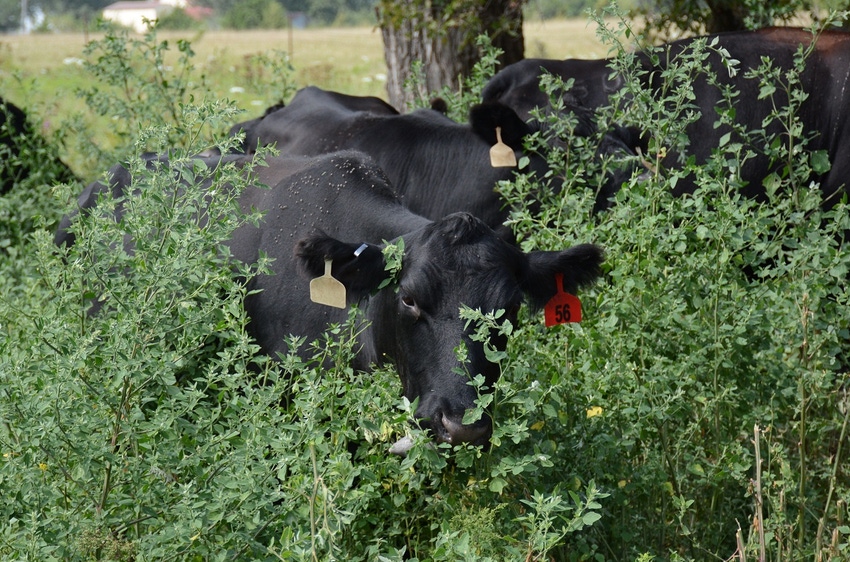
Those of us who believe in and study the natural model are often accused of being outlaws and something less than normal.
It sometimes seems anyone that has or would have anything good to say about weeds or the creation for that matter is considered a heretic and a lunatic to boot. I promise ya’ll that this is not truly normal.
Walt Davis, Alan Newport and I have addressed the weed issue as a management problem on several occasions. My latest was February 28, titled Weeds can be quality, cheap feed.
In mid-March we took an hour or more walking, observing, and digging (monitoring) the farm and pastures that we grazed with high animal density from September 2017 through December 2017. This is the farm that we described having a huge coverage of large biomass of aster, probably heath aster. We found sites with extensive amounts of new-growth forbs, areas with goodly amounts of grass two to six inches tall, and large places covered with heavy stands of White Clover two to four inches tall, and considerable growth of hairy vetch. Lots of what we saw likely reflected the time of the severe high animal density grazing as well as moisture levels before and after grazing and the soil type and location.
The farming use and abuse in the past century may likely be very important. The thickest and tallest stands of grass were on the areas that were grazed in September and early October. After early October the amount of Aster stems that the steers left standing increased. There was no significant reduction in sunlight but the amount of new growth forbs was tremendous in these areas in mid-March.
Our steers will likely arrive back to this farm in late March 2019. We will plan for 70 to 90 days on the location with 24-hour cattle moves. We will attempt to graze at 70,000 pounds per acre or greater animal densities.
What will happen this year and result from this early growing season hit? I am certainly not sure but I expect that the cattle will take a vast majority of the forbs down to the point that we will not see the exact repeat of last year and likely anything close.
The take home message is to allow for complete recovery, graze fast and hard in high densities. After that we simply plan for what we want and utilize what we grow. Count it all good with joy.
About the Author(s)
You May Also Like






